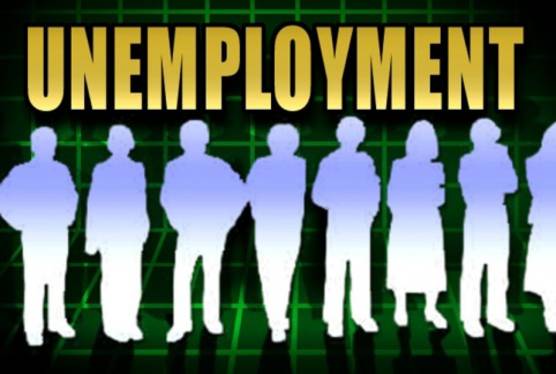By Amanda Pampuro
(CN) — The number of Americans receiving unemployment insurance benefits out-populates Australia. On top of the 25.3 million people currently receiving benefits, 2.98 million Americans brought their first claims last week, the U.S. Department of Labor reported Thursday.
Between the spread of COVID-19 and measures taken to reduce public health risks, 15.7% of Americans are out of a job today.
With nearly a third of its population on unemployment insurance benefits, California ranks highest in the country, followed by Michigan and Nevada, both above 20%.
In the first week of May, Oklahoma, Maryland and New Jersey saw the highest spikes in claims. Meanwhile states like Florida and Georgia, which opted to reopen their economies, reported the largest decreases in claims. In the Sunshine State, 258,000 fewer people applied for unemployment benefits compared to the prior week.
The Department of Labor used covered employment of 145,671,710 in its calculation, defining that term as Americans who are “unemployed through no fault of their own,” while also meeting certain work and wage requirements.
Weekly rates of initial claims for benefits have decreased over the last five weeks, but some economists caution the bottom of the trough is still a long way down.
New York Federal Reserve economist Joseph Briggs projected U.S. unemployment will hit 40 million in the second quarter, but 75% of these jobs to return by the years end. Given today’s reported unemployment, that would leave 6 million people out of work during Christmas.
Despite the staggering unemployment numbers, a May 13 poll from Morning Consult reports 70% of Americans, including 82% of Democrats and 56% of Republicans, continue to support social distancing to slow the spread of Covid-19.
People who either have had or know someone who contracted the disease were more likely to support extending social distancing.
According to the U.S. Bureau of Labor Statistics’ April jobs report, the hardest-hit demographic was working teenagers, 32% of whom lost a job, followed by women and Hispanics.
While 12.4% of white men lost jobs in April, black women (16.4%) and Latinas (20.2%) experienced unemployment at a much higher rate. Although women made up 49% of the pre-pandemic workforce, they made up 55% of April unemployment leading some to describe the economic downturn as a “shecession.”
An analysis from the National Women’s Law Center found this trend continued across most job sectors. Women made up 48% of retail positions but accounted for 61% of job losses.
“Between the end of the Great Recession in July 2010 and the start of the Covid-19 crisis in February 2020, women gained 11.1 million jobs. In April 2020, the entirety of those gains was wiped out,” Claire Ewing-Nelson, National Women’s Law Center research fellow, noted in the report.
In a May 13 report, investment firm Goldman Sachs highlighted consumer spending trends signifying slight recovery from the stay-at-home economy. While rideshare-app use is still down 56% compared with last year, last week marked the fourth week in which Uber rides increased, particularly during weekday, 9-to-5 trips.
Researchers also found a 15% uptick compared with last year in Americans using the Starbucks app, which allows for cashless payment and may indicate a taste for beginning the dawn of the new economy with a cup of coffee.
“Consumers are still at the trough of impacts from COVID-19,” the report explains. But if the trends continue over the next few months, it says, “the ‘stay at home’ category will show significantly slower growth, while the ‘back to normal’ category will likely [show] moderate declines as people resume daily activities of dining, commuting, and travel.”
The leisure and hospitality industry, which includes restaurants and bars, lost 7.7 million jobs in April. According to the New York Fed’s survey of consumer expectations, only about 46% of Americans think they can find a new job if they lose theirs, down from 58% compared with last year.
Still service industry veterans remain hopeful.
“I’ve been in the business long enough that we’ve gone through many, many crises from SARS and 9/11, to the ‘70’s gasoline crisis,” said Peter Ricci, director of hospitality management programs at Florida Atlantic University. “This one is different in that it’s affected every industry segment at the same time, but something that the hospitality industry is very strong on is creativity and cleanliness.”
Until jobs return, Ricci said: “What you need to do in the short run is better prepare yourself to be one of the people who gets hired when people start hiring again. So finish your degree, continue your education with some certifications, do the MBA that you always talked about but you never did.”
The U.S. Department of Labor jobs report can be viewed below:
[Open .pdf in new window]
The Goldman Sachs consumer spending trends report can be viewed below:
[Open .pdf in new window]
The analysis from the Women’s National Law Center can be viewed below:
[Open .pdf in new window]
Like this:
Like Loading...
Related





 Tweet This
Tweet This Facebook
Facebook Digg This
Digg This Bookmark
Bookmark Stumble
Stumble RSS
RSS


























REAL NAMES ONLY: All posters must use their real individual or business name. This applies equally to Twitter account holders who use a nickname.
0 Comments
You can be the first one to leave a comment.